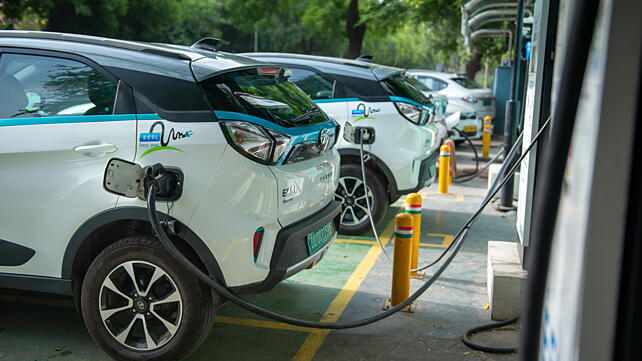
India’s capital has set its sights on becoming the country’s electric vehicle capital as well. And if numbers are any indication, Delhi has already reached one milestone in this journey: the share of EVs in new vehicle purchases is now in double digits, Manish Sisodia, Deputy Chief Minister, Government of NCT of Delhi said recently.
Given that Delhi is also the country’s pollution capital – it ranks pretty high in the pollution rankings globally – there has been understandable urgency in promoting non-ICE (internal combustion engine) vehicles to cut emissions.
The Delhi EV policy was launched in 2020 and is being looked upon with interest, especially when examined alongside the EV policies of some other states. At least 15 states have either notified or drafted state Electric Vehicle (EV) policies and they broadly fall into two categories: those focused on offering manufacturing incentives and those which primarily offer demand incentives. The policy framed for Delhi is primarily offering demand incentives.
Delhi Declaration
The Delhi EV policy wants accelerated adoption of battery EVs so that by 2024, one in four new vehicle registration is an EV. There is special focus on two-wheelers, three-wheelers, and goods vehicles, since these vehicle categories contribute most to pollution.
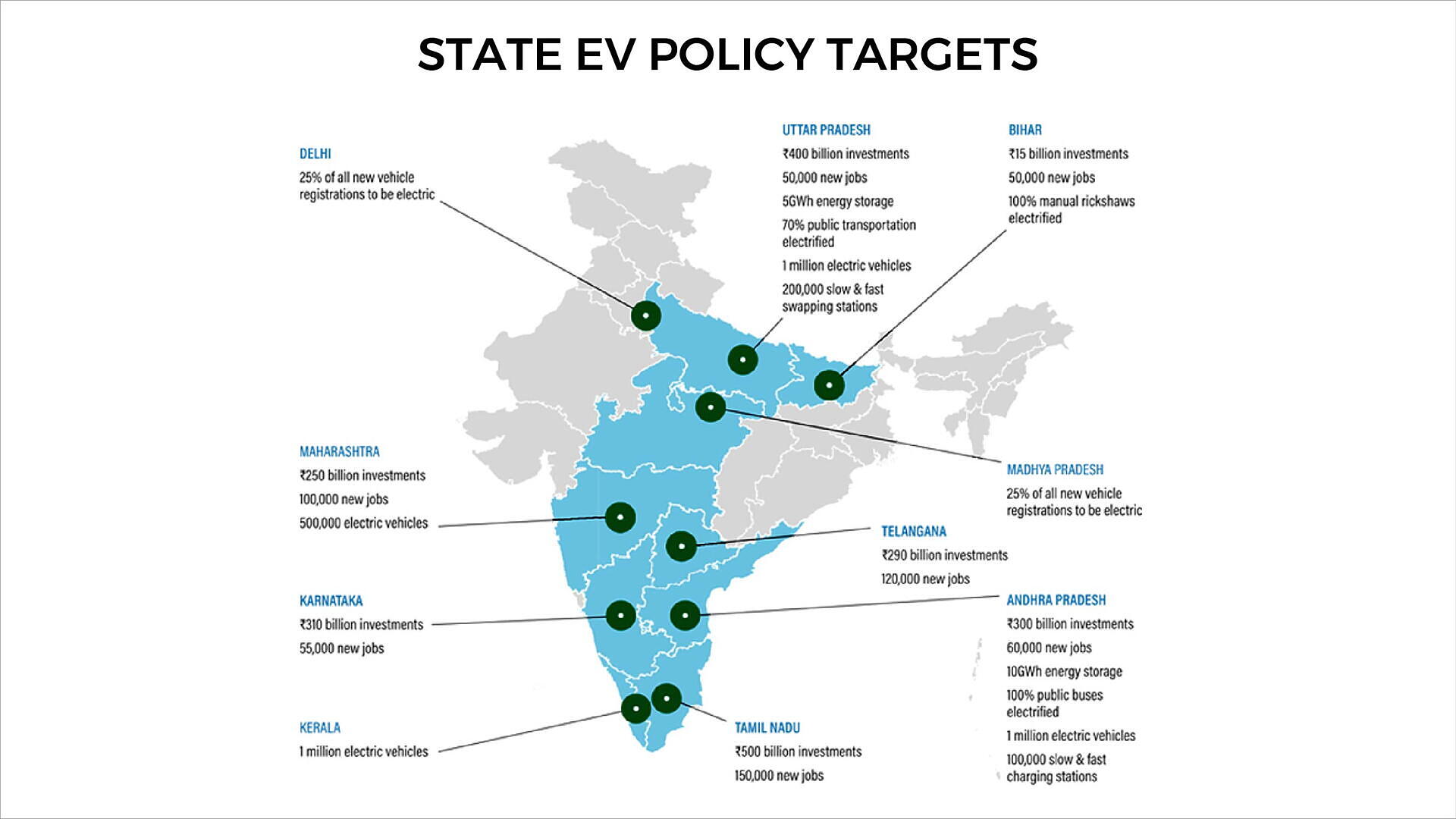
Some key features:
- The purchase incentive defined in the policy is INR 5,000 per kWh of battery capacity for two-wheelers and INR 10,000 per kWh of battery capacity for cars (first 1,000 cars, with conditions). So, an average e-two wheeler would generate an incentive of INR 10,000.
- Additionally, there is a scrapping incentive of up to INR 5000, applicable on scrapping an old ICE vehicle to purchase the EV, subject to some conditions.
- All last-mile delivery platforms, which conduct deliveries on two-wheelers, must ensure that half their fleet is electric by March 2023 and fully electric by March 2025.
- Also, the policy talks of interest subvention of 5% on loans and/ or hire purchase scheme for the purchase of an e-auto. This makes loans to buy EVs in Delhi among the lowest anywhere in India.
- Then, all leased/ hired cars used for the commute of state government officers were to also become electric within one year from the date of notification of this policy.
- At least 50% of all new electric buses were to be added to the city bus fleet.
- Besides upfront purchase subsidy, the policy also prescribes a waiver of road tax and registration fees for all battery EVs.
- There are concessions for charging equipment too – 100% subsidy for the purchase of charging equipment up to INR 6,000 per charging point for the first 30,000 charging points at homes/ workplaces.
- A stated objective of the policy is to provide accessible public charging/ battery swapping facilities within 3 km of Delhi.
Other States
Kerala has devised a policy, which targets a million EVs; Maharashtra aims to attract INR 250 billion in investments for creating an EV manufacturing ecosystem, plus creating one lakh jobs and half a million battery EVs; Tamil Nadu is eyeing INR 500 billion investments and one-and-a-half lakh new jobs. Like Delhi, Madhya Pradesh has set the target of 25% of new vehicle registrations being EVs.
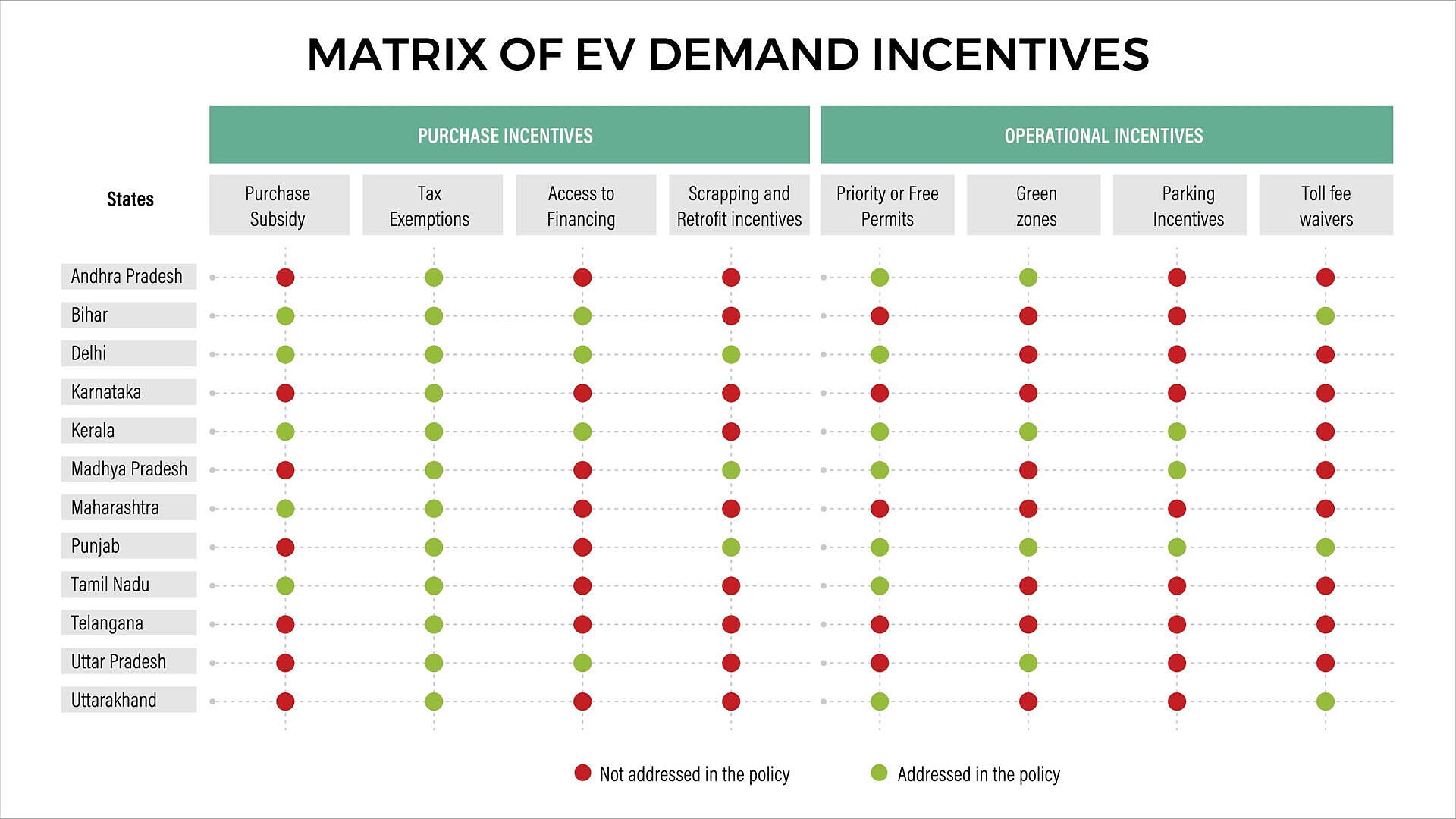
World Resources Institute (WRI) India, a research organisation that works with stakeholders to address pressing urban challenges, says that states’ EV policies maybe purchase or operational incentives, with the former defraying the higher upfront costs of EVs and the latter encouraging on-road EV usage. Demand incentives primarily fall within the mandate of transport authorities and urban development authorities for execution and enforcement at the city and state levels.
“State EV policies have outlined a good mix of demand incentives for promoting EV adoption in their regions. The road tax exemptions are a robust complement to the FAME-II purchase subsidies and should be implemented at the earliest by state transport departments. Fiscal allocations for road tax exemptions in state budgets can help in faster deployment of this incentive,” WRI said in a review of state governments’ policies on electric mobility.
Among non-financial incentives, permit waivers for EVs and a complementary ban on permit renewals for polluting vehicles would be impactful in promoting the steady conversion of ICE commercial vehicles to electric.
Jasmine Shah, Vice Chairman, Dialogue and Development Commission (DDC) of Delhi has explained in a YouTube video that Delhi’s policy is focused on demand-side push and incentives. It presumes that once demand takes off, manufacturing of EVs will fall in place. “Even when we worked on creating demand focus, we examined which segment of vehicles contributed most to pollution and concentrated on incentivising these vehicles. We have also incentivised private charging stations,” he said.
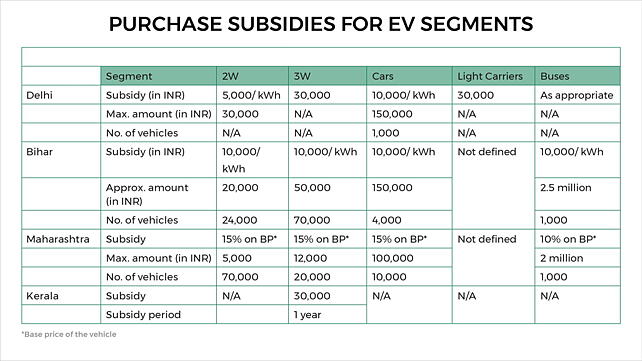
Pawan Mulukutla, Director (Clean Mobility and Energy Tech), WRI India said Delhi has rightly focused on demand-side subsidy but has placed no ban or restrictions on the purchase of ICE vehicles.
“Many countries have set cut-off dates after which ICE vehicle purchases will be either stopped or heavily disincentivised. We need to develop targets for electrification in both the short and long term. Therefore need utilisation mandates and at the same time, need to disincentivise ICE vehicles and move towards phasing out these vehicles,” Mulukutla said.
In addition to all this, non-financial incentives have also been introduced. Promoting EVs is not just about subsidy but seeking feedback from stakeholders on what all is needed to make the switch.
Meanwhile, Shah has also spoken about non-financial incentives and the development of robust charging infrastructure. The state government has provided subsidy on tariff for charging EVs and set a target of 30,000 private charging stations. Work is already on to simultaneously also set up 500 public charging stations in PPP mode.
Comparison
Of the four purchase incentives and an equal number of operational incentives mapped by WRI, Kerala and Punjab top the list with six incentives each in their respective policies, followed by Delhi with five such incentives.
Delhi and Maharashtra provide purchase subsidy across multiple small vehicles; Bihar offers subsidy for first one lakh e-vehicles manufactured in the state, and Tamil Nadu offers undefined subsidy for the state road transport fleet.
It is also interesting to see that while financing EV purchases has not been an area of focus for policymakers, only SBI has the concept of a loan at lower interest rates for EV purchases as of now (lower by 20 basis points).
Among operational incentives, Andhra Pradesh offers priority permits that are being offered for e-autos. Delhi and Tamil Nadu have an open permit for such auto-rickshaws, while TN offers permit waivers for light goods carriers. Punjab and Kerala have made it clear that only e-autos will be given permits in the future in select cities.
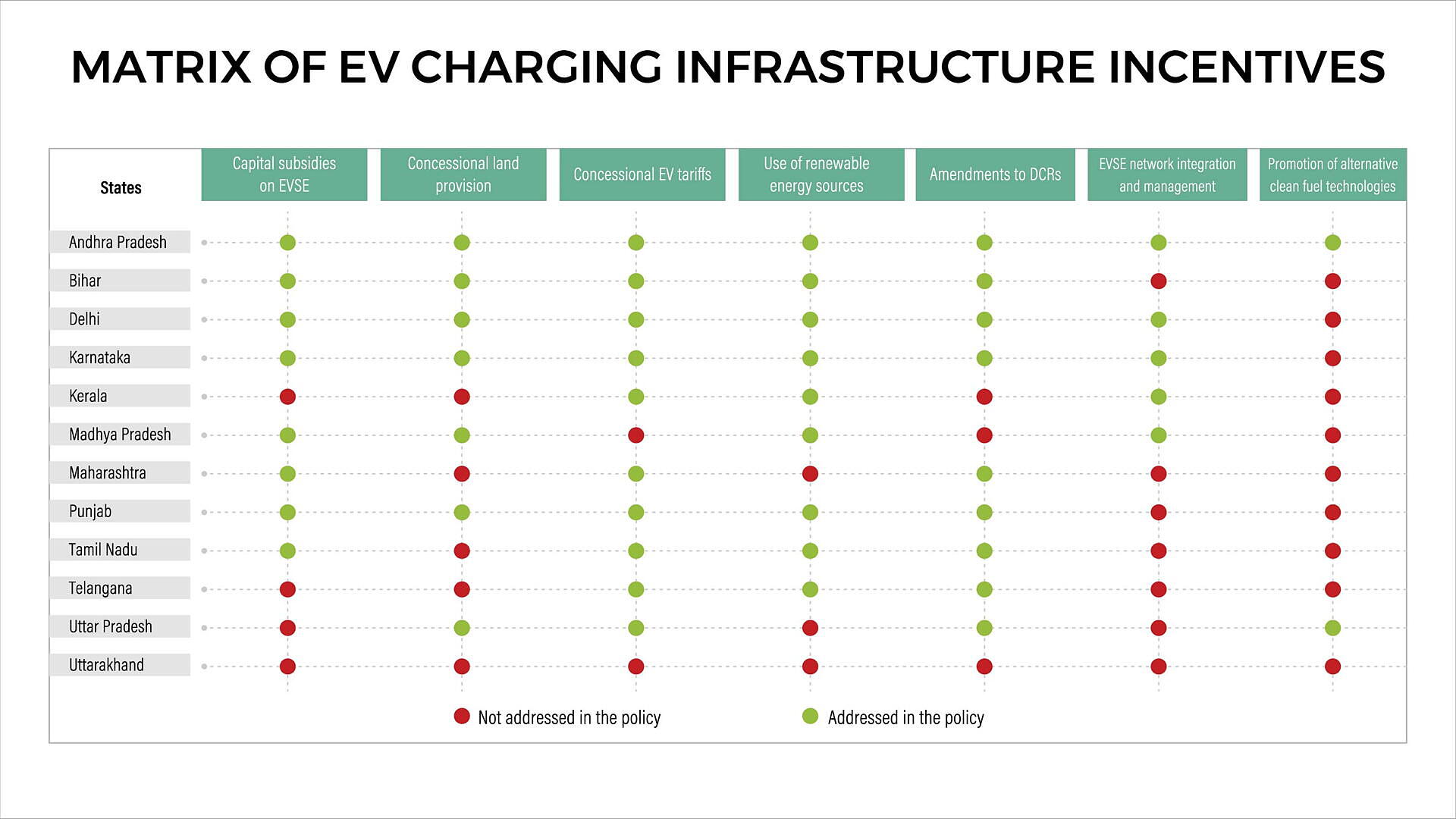
As for incentives on charging infrastructure, Andhra trumps Delhi with seven incentives to Delhi’s six; all other states also offer different incentives but none as extensive as AP.
Also, as explained earlier, Delhi lags when it comes to incentivising production of EVs or components used in EVs. On the contrary, the larger states with a production focus have offered more incentives to lure EV production. TN has rolled out the red carpet with all eight incentives mapped by WRI, while AP and Kerala have seven each. The incentives include capital subsidies, tax subsidies, etc.
Conclusion
Through an all-round focus on EVs, Delhi has set itself a noble goal: at least 50% of all intra-city travel in the next five years will be via EVs. But as the saying goes, proof of the pudding will lie in the eating.